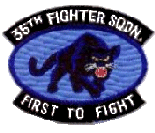This wonderful two part book describes air to air combat between USAF and Navy fighters and North Vietnamese MiG fighters over the deadly skies of North Vietnam during 1965 – 1973.
During the war in Southeast Asia, U.S. Air Force fighter pilots and crewmen were repeatedly challenged by enemy MIG’s in the skies over North Vietnam. The air battles which ensued were unique in American history because U.S. fighter and stike forces operated under stringent rules of engagement. With periodic exceptions, for example, MIG bases could not be struck. The rules generally forbade bombing or strafing of military and industrial targets in and around the enemy’s heartland, encompassing the capital of Hanoi and the port city of Haiphong.
These restrictions gave the North Vietnamese substantial military advantage. Free from American attack and helped by its Soviet and Chinese allies, the enemy was able to construct one of the most formidable antiaircraft defenses the world has even seen. It included MIG forces, surface-to-air missile (SAM) batteries, heavy concentrations of antiaircraft artillery (AAA) units, and an array of early warning radar systems. These elements sought to interdict and defeat the U.S. bombing campaign against North Vietnam’s lines of communication and its military and industrial base. The primary mission of U.S. fighter pilots was to prevent the North Vietnamese MIG’s from interfering with U.S. strike operations. This book tells how American airmen-assisted by an armada of other USAF aircraft whose crews refueled their planes, warned of approaching enemy MIG’s and SAM’S, and flew rescue missions when they were shot down managed to emerge from their aerial battles with both victories and honor.
JOHN W. HUSTON, Major General, USAF
Chief, Office of Air Force HistoryAces and Aerial Victories is a collection of firsthand accounts by Air Force fighter crews who flew combat missions over North Vietnam between 1965 and 1973. They recall their air battles with enemy MIG fighters, the difficult and dangerous tactical maneuvers they had to perform to survive, and their victories and defeats. The narratives are taken directly from aircrew after-action reports. A number of direct quotations have been altered, but only to clarify for the reader the very specialized language of their profession (e.g., code words).
When the Air Force found itself engaged in aerial combat over North Vietnam beginning in 1965, it had no plan for handling claims or awarding victory credits. A year elapsed before Headquarters Seventh Air Force, located at Tan Son Nhut Air Base (AB) in South Vietnam, developed a method for awarding credits. By this time at least 16 MIG’s had been downed by USAF crews. On 12 November Seventh Air Force published a regulation to govern victory credits; however, it was not until 1967 that Headquarters USAF authorized the Pacific Air Forces to publish confirming orders. In accordance with the Seventh Air Force regulation, each combat wing or separate squadron was required to establish an Enemy Aircraft Claims Evaluation Board of four to six members. Each was composed of at least two rated officers, the senior operations officer, and the unit’s intelligence officer.
A crew seeking confirmation of a “kill” was required to submit a written claim to the board within 24 hours after the shootdown. The board had 10 days to process the claim and to forward it through the unit commander to Seventh Air Force headquarters, where another board was convened to review the evidence. This headquarters board consisted of six officers-three from operations, two from intelligence, and one from personnel. They reviewed the evidence and were required to confirm or deny the claim within 24 hours. Credit for destroying an enemy aircraft became official upon publication of a Seventh Air Force general order.
An enemy aircraft was considered destroyed if it crashed, exploded, disintegrated, lost a major component vital for flight, caught fire, entered into an attitude or position from which recovery was impossible, or if its pilot bailed out. The claim had to be substantiated by written testimony from one or more aerial or ground observers, gun camera film, a report that the wreckage of the enemy aircraft had been recovered, or some other positive intelligence that confirmed its total destruction. No more than two 2-man crews could be credited with downing a single enemy aircraft, thus limiting the smallest share in a victory credit to one-fourth. Every detail had to be described as clearly as possible to insure that claims were evaluated judiciously and speedily.
Aces and Aerial Victories is a fabulously detailed retelling of many USAF MiG kills. It is divided into three parts that are chock full of maps, illustrations and pictures.
- Aces and Aerial Victories – Part I & II: 1965 – 1968
- Aces and Aerial Victories – Part III: 1972 – 1973

Leave A Comment